A rich history.
Fort Ticonderoga was completed by the French in 1757 when they still controlled Quebec and what was eventually to become Vermont and the revolutionary state of New York. On raised ground with strategic views, it’s at the south end of Lake Champlain. The Fort featured in disputes between the French and the English and later between the English and the American revolutionaries.
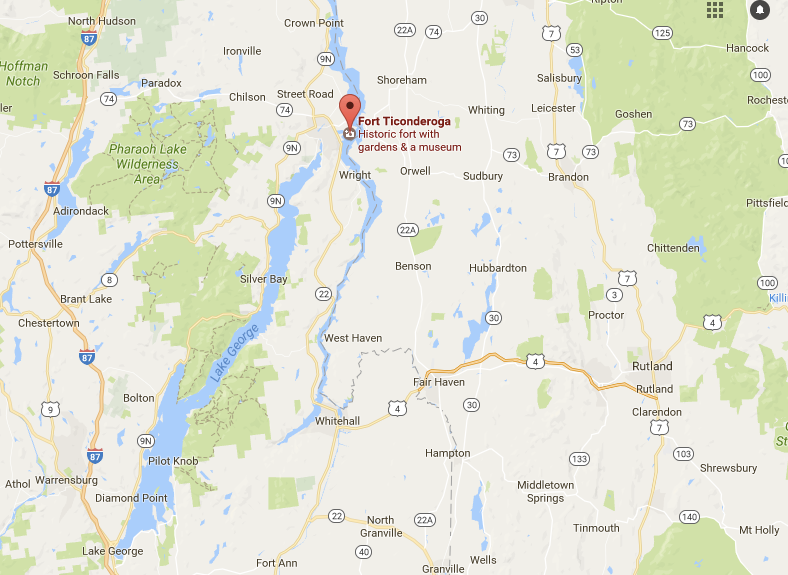
For our visit to Middlebury College yesterday we stayed in Shoreham at the 1790 Shoreham Inn, a few miles north east of the Fort where the proprietors Elizabeth and Anthony made us welcome, serving a tremendous breakfast of French toast and sausages on what was the first properly sunny day we have had in two weeks.
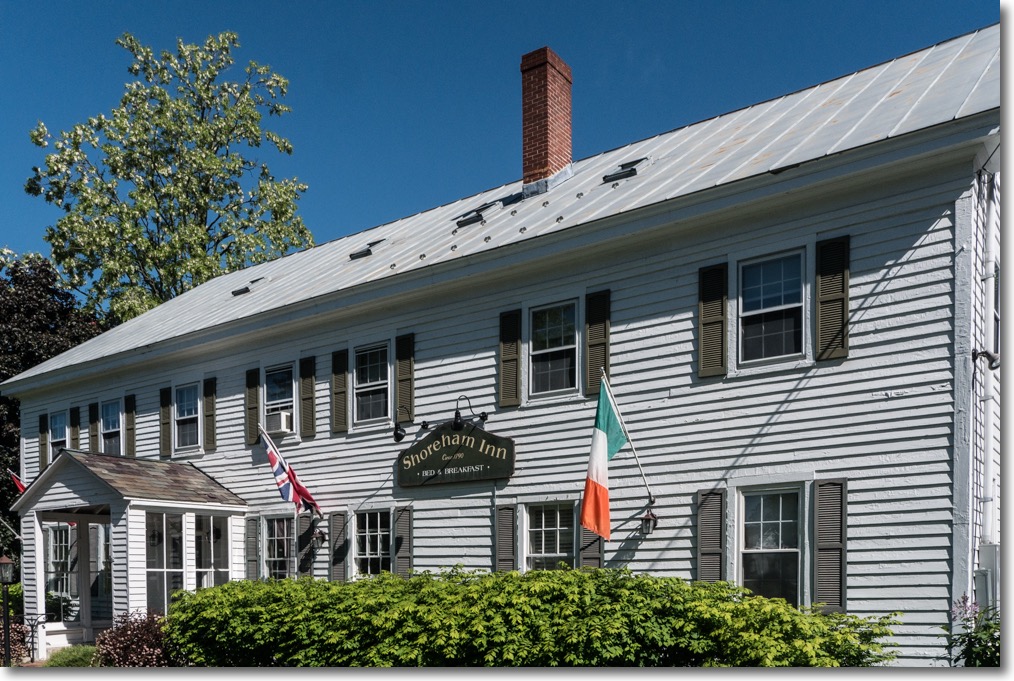
The Shoreham Inn.

A WW1 machine gun honors the war dead outside the Inn.
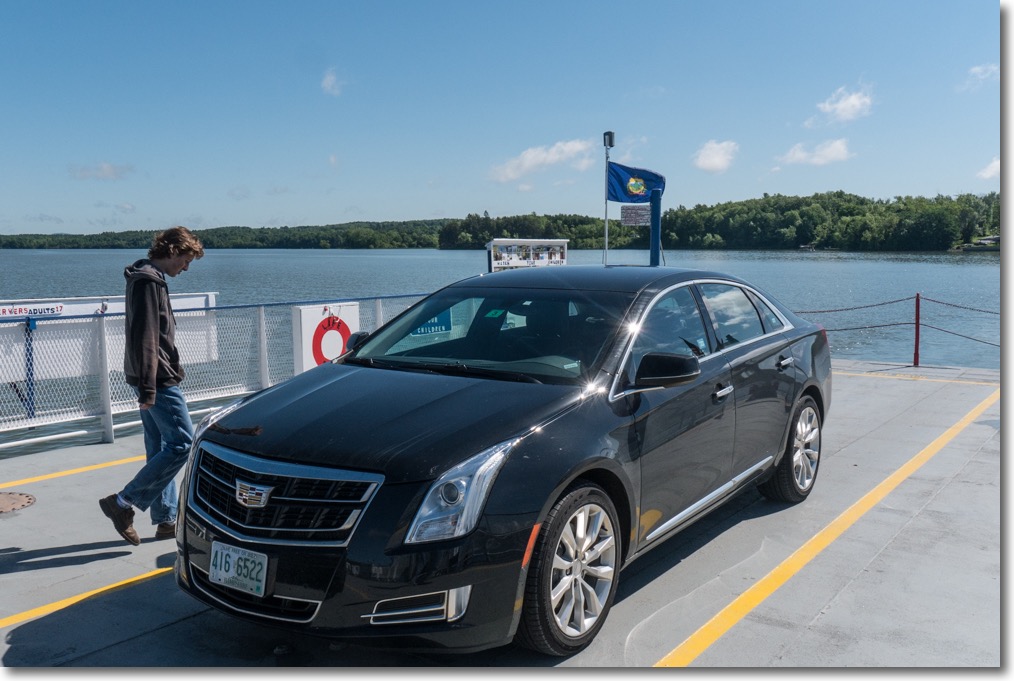
We had to take the ferry into New York, which was rather fun.
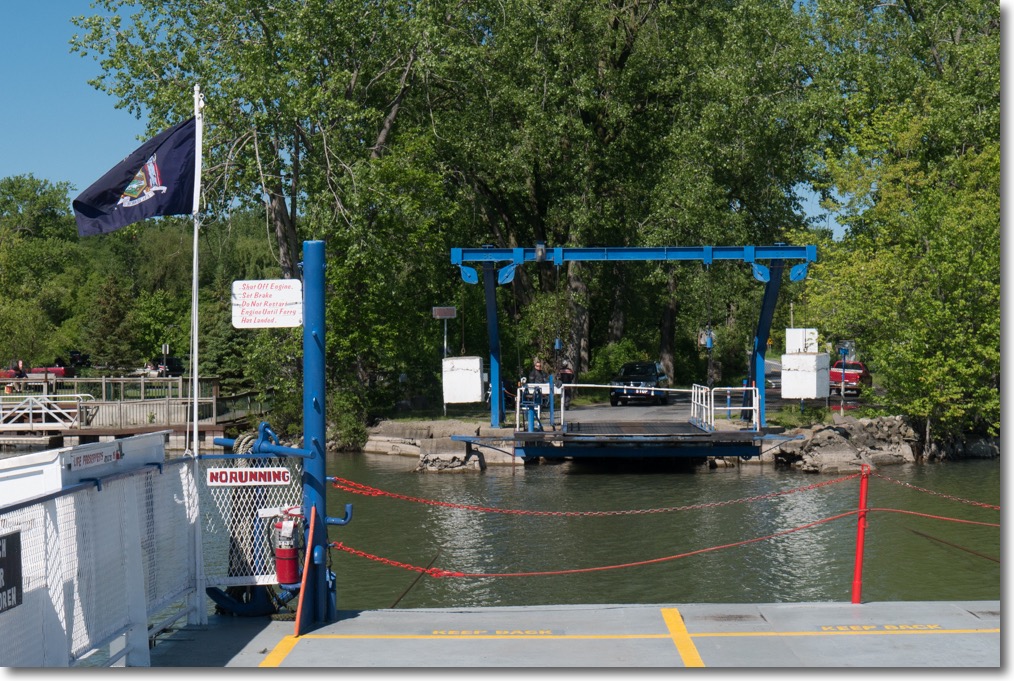
The ferry prepares to dock on the New York side of Lake Champlain.

Nine cars will fit on the ferry. Ours was one of two – mid-week touring makes sense!
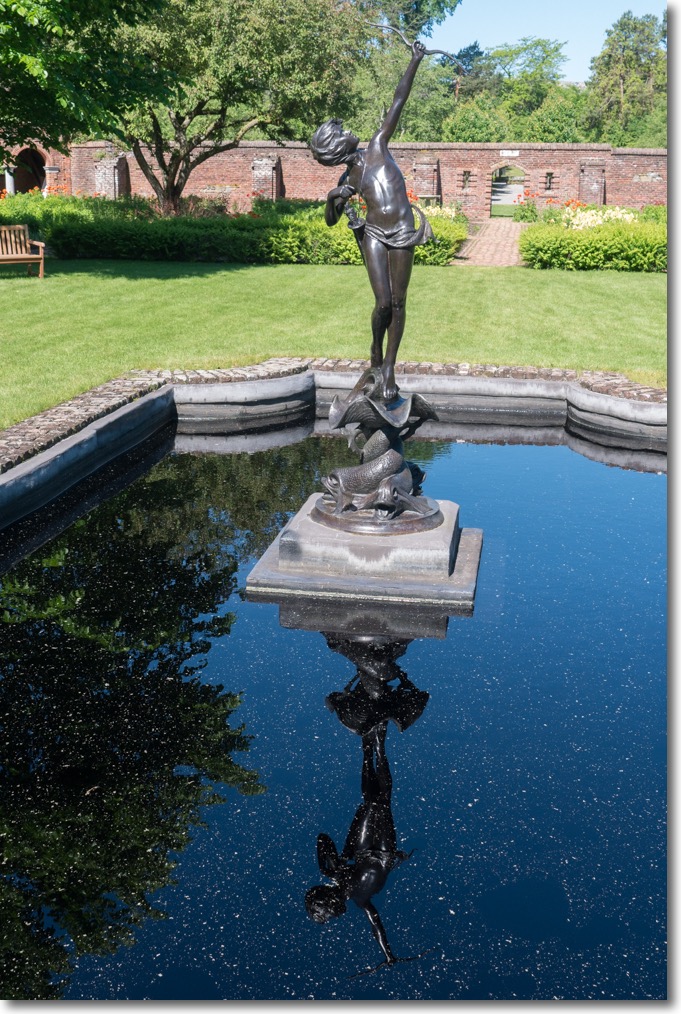
Trust the French to erect a statue of Cupid in the King’s Garden at the Fort.
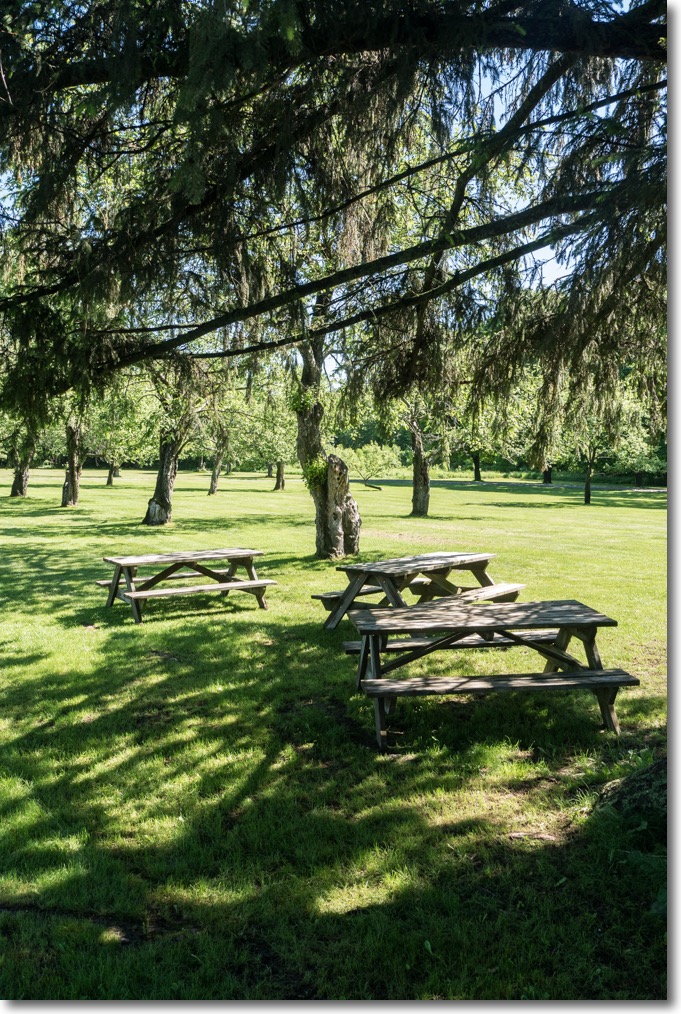
The formal gardens are in a peaceful setting on the lake.
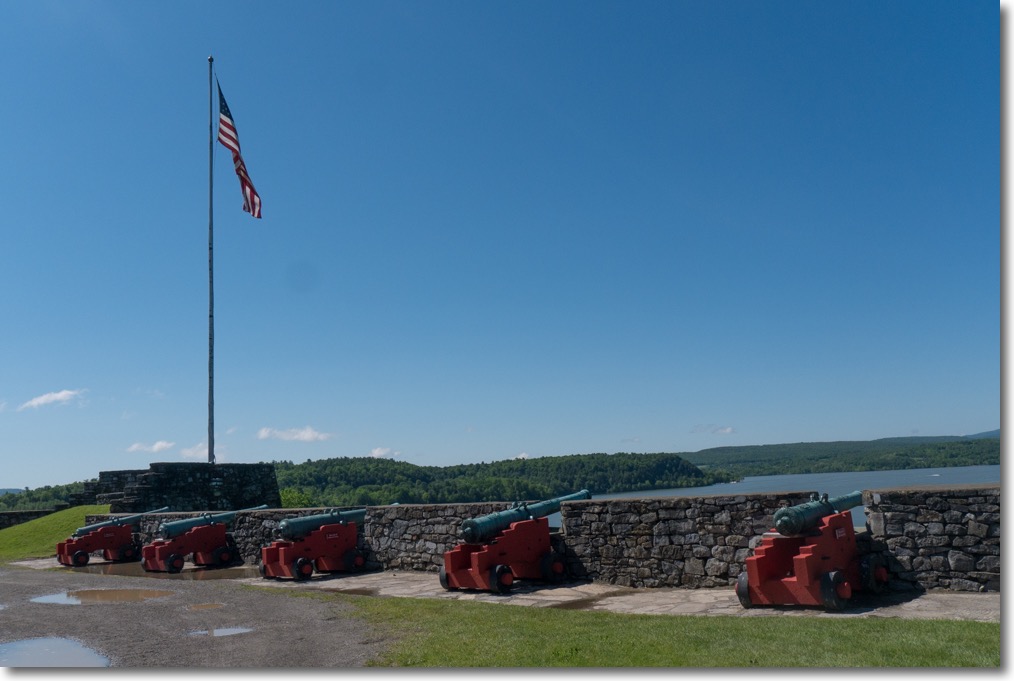
Guns surround the battlements and appear to be 4″ in bore. The British, under General Burgoyne, managed to take the Fort from the Americans – the latter originally commanded by Benedict Arnold – by the simple expedient of dragging cannon to the even higher nearby Mount Defiance which it was known was within range. The French may have been brilliant military engineers but geographic strategy was not their strong point …. The Americans abandoned the Fort to the British without resistance once they saw Burgoyne’s cannon atop Mount Defiance. Brilliant strategy by the British.
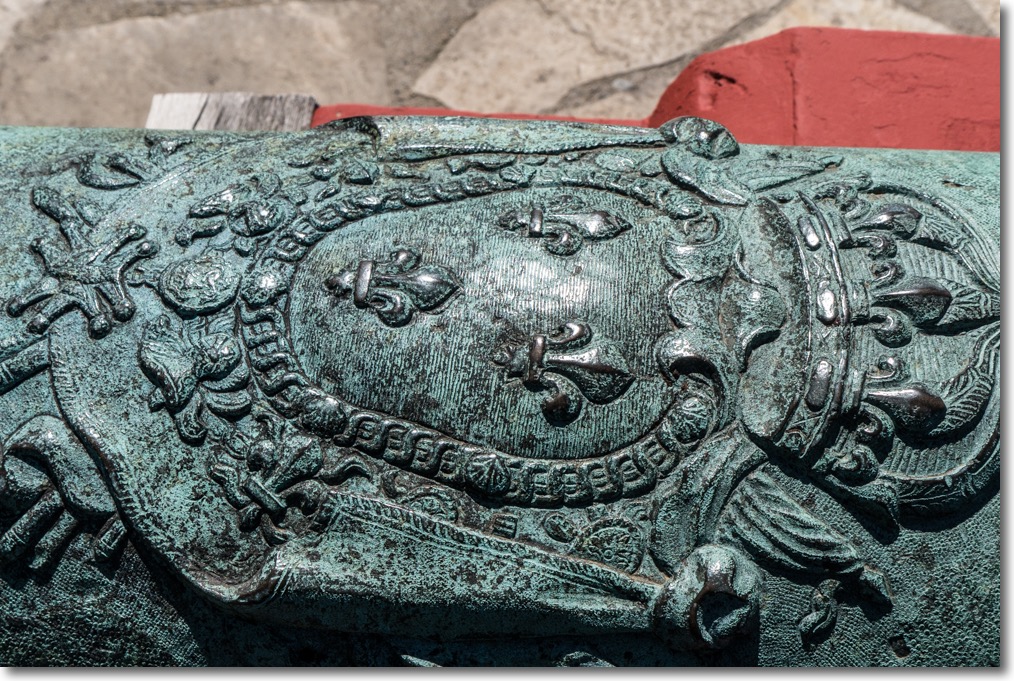
Fleur de Lys decorate the gun barrels.
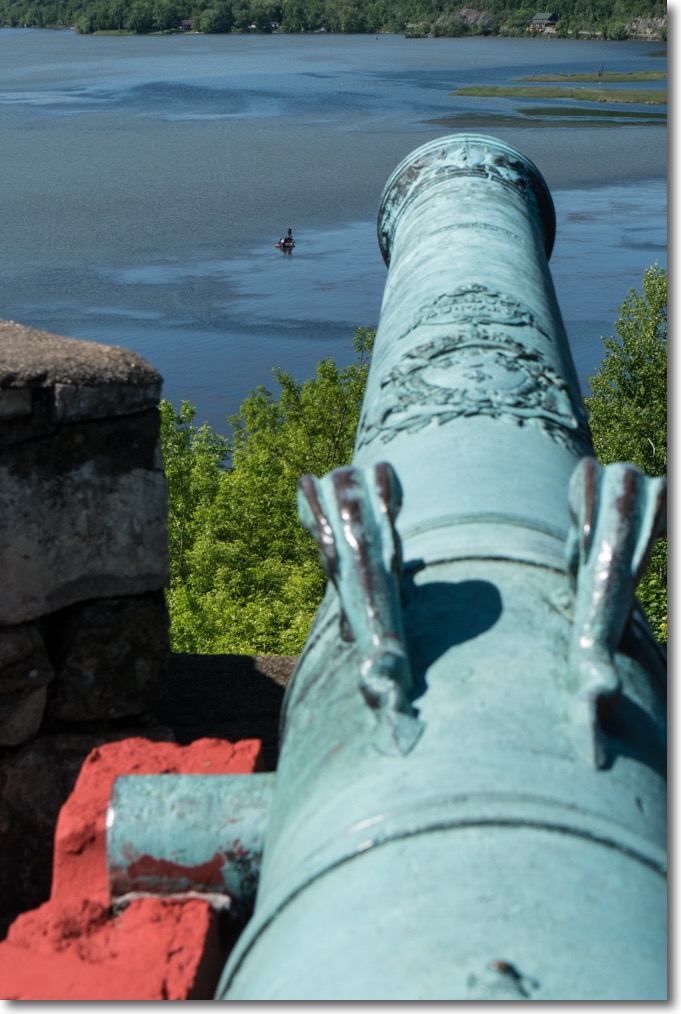
It is never a good idea to sail down a narrow waterway with cannon above, something Churchill failed to learn from history when he sent the British fleet down the Dardannelles in 1915 to massive losses of men and hardware from the overhead Turkish cannon and the mines below the waterline. The Turkish guns saw to it that British minesweepers were rendered useless.

In addition to dozens of cannon, there is a handful of mortars which are some 12″ bore.
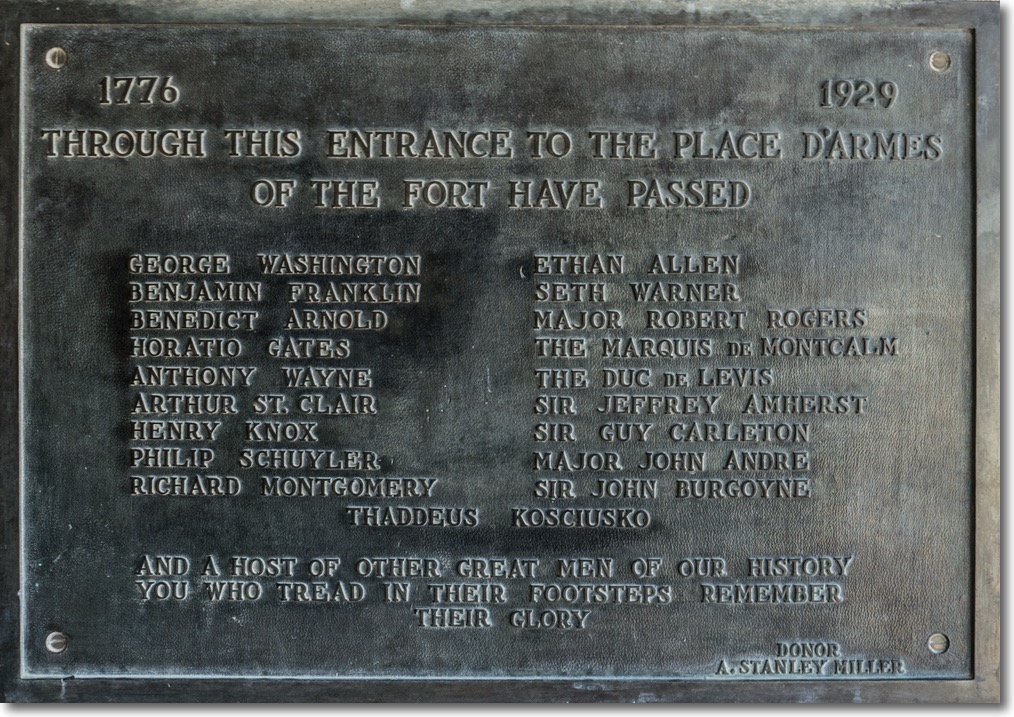
A long and distinguished list. Horatio Gates defeated Burgoyne at Saratoga, replacing the ineffectual Schulyer (pronounced ‘Skyler’). Amherst was named after Sir Jeffrey Amherst. Kosciuszko (correct spelling) was the very effective fortifications engineer at Saratoga. John André was eventually executed for committing treason with Arnold, who got away with it.
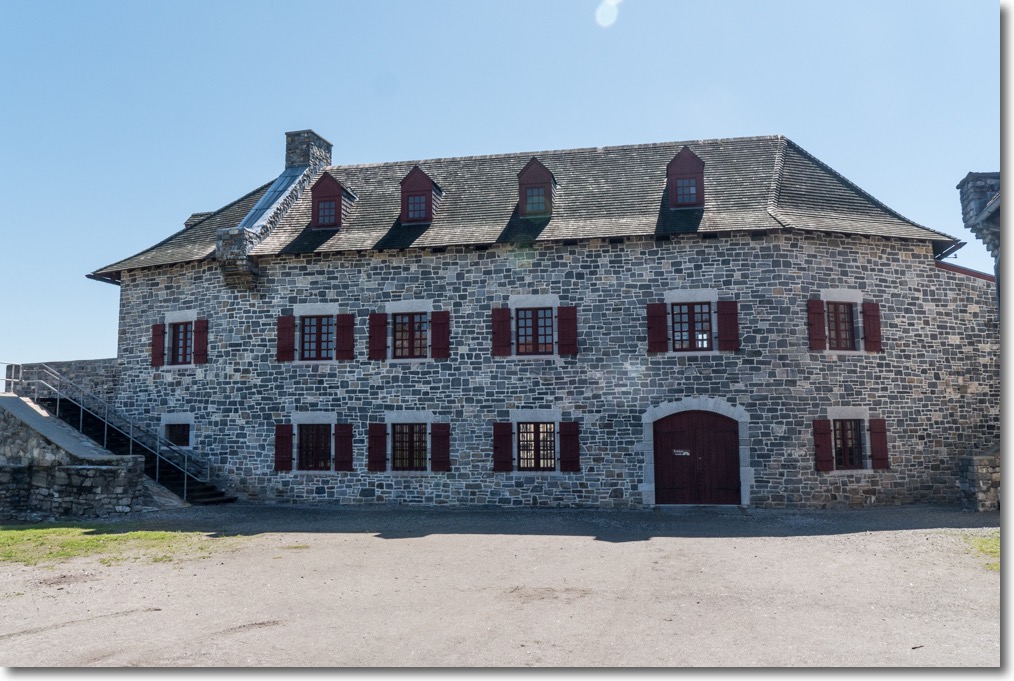
The far side of this barracks building overlooks Lake Champlain, facing north.
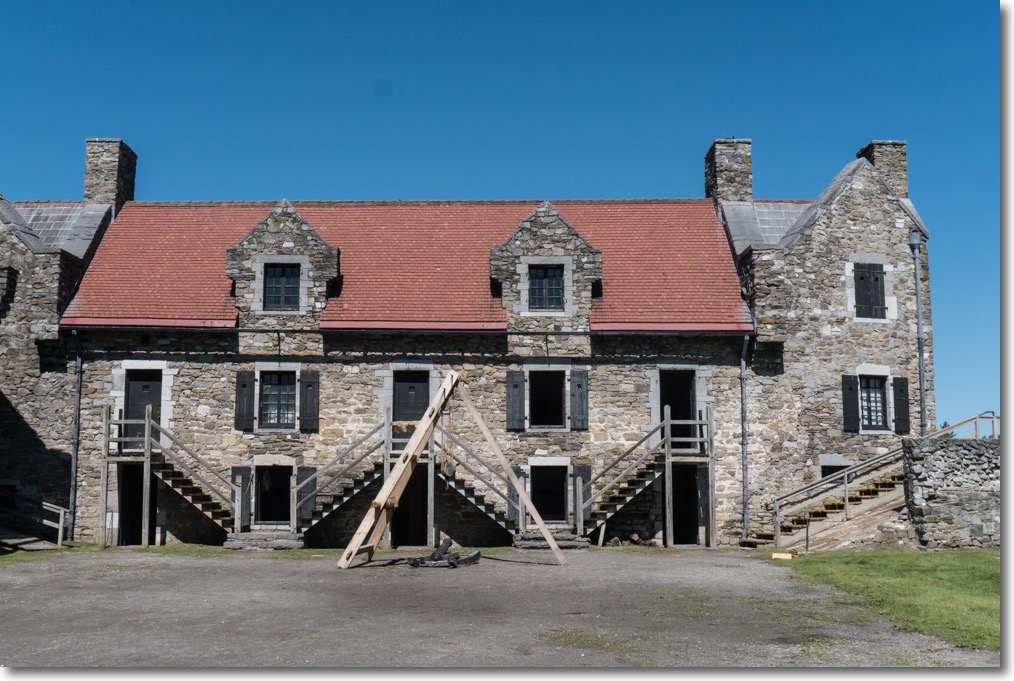
One of the supply houses in the Fort.
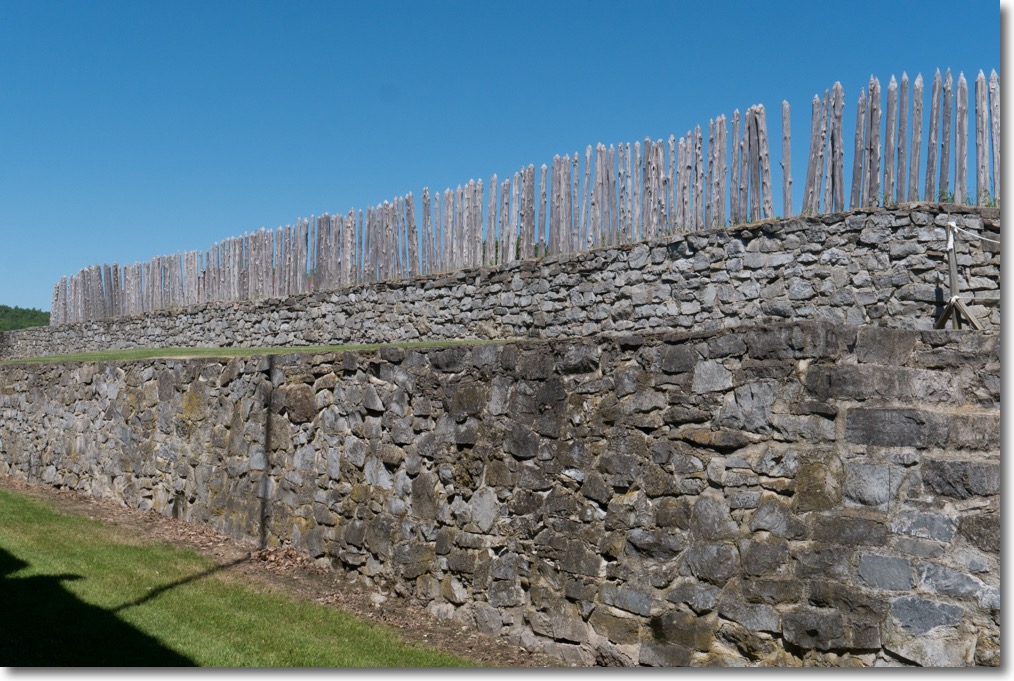
Fearsome stakes deter those foolish enough to charge the Fort.
Read here about the subsequent battles of Saratoga, where Burgoyne’s British Army ended up surrendering, and you will conclude that the Americans’ flight from Fort Ticonderoga was of little consequence to the outcome of the Revolutionary War.
A visit to the Fort is not only recommended to Revolutionary War buffs but also to anyone who enjoys deserted back roads through Vermont and New York which offer some glorious driving …. even in a Cadillac!